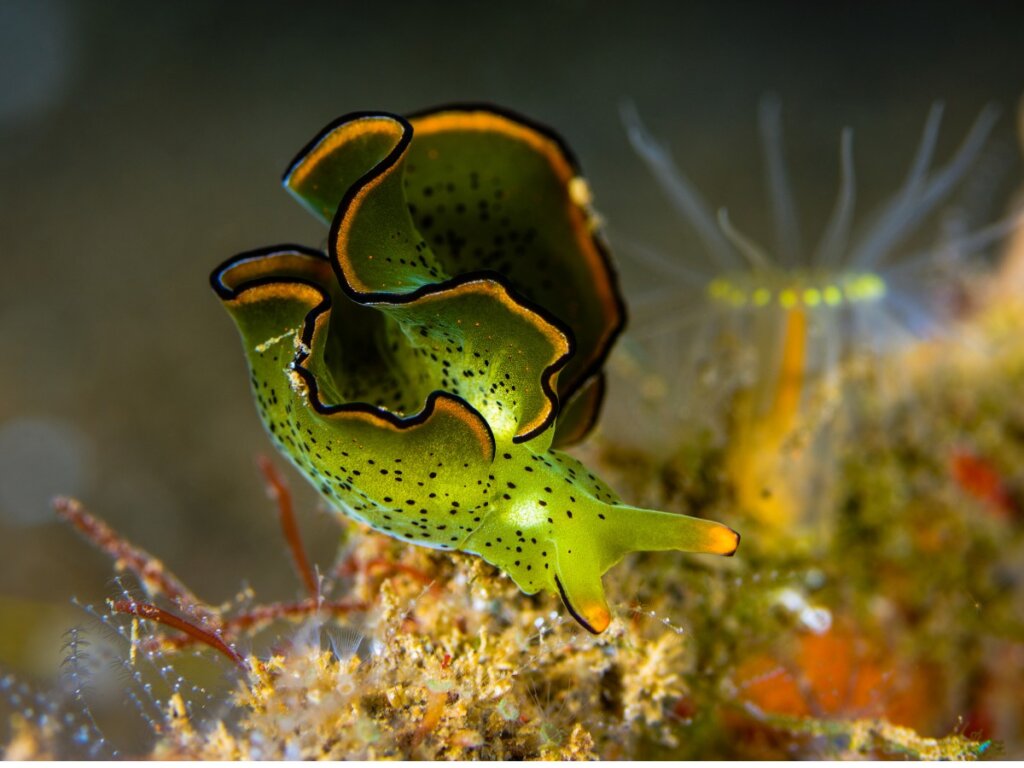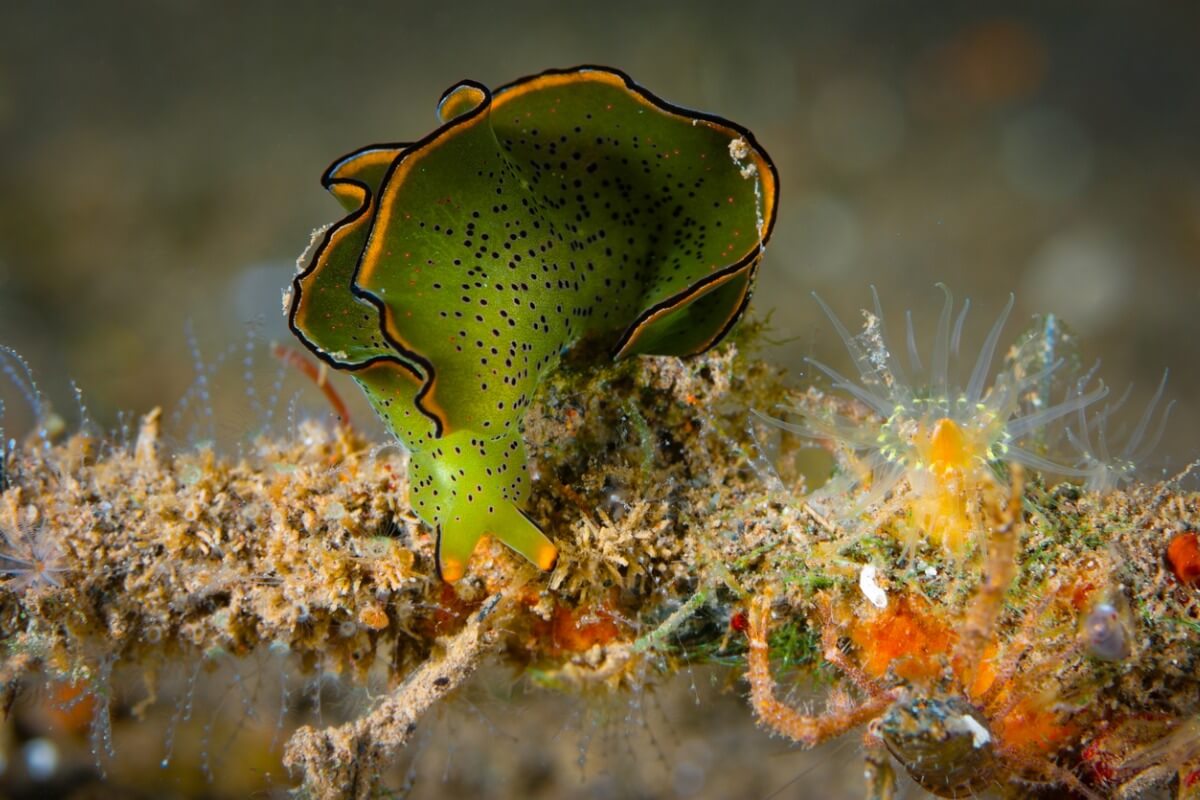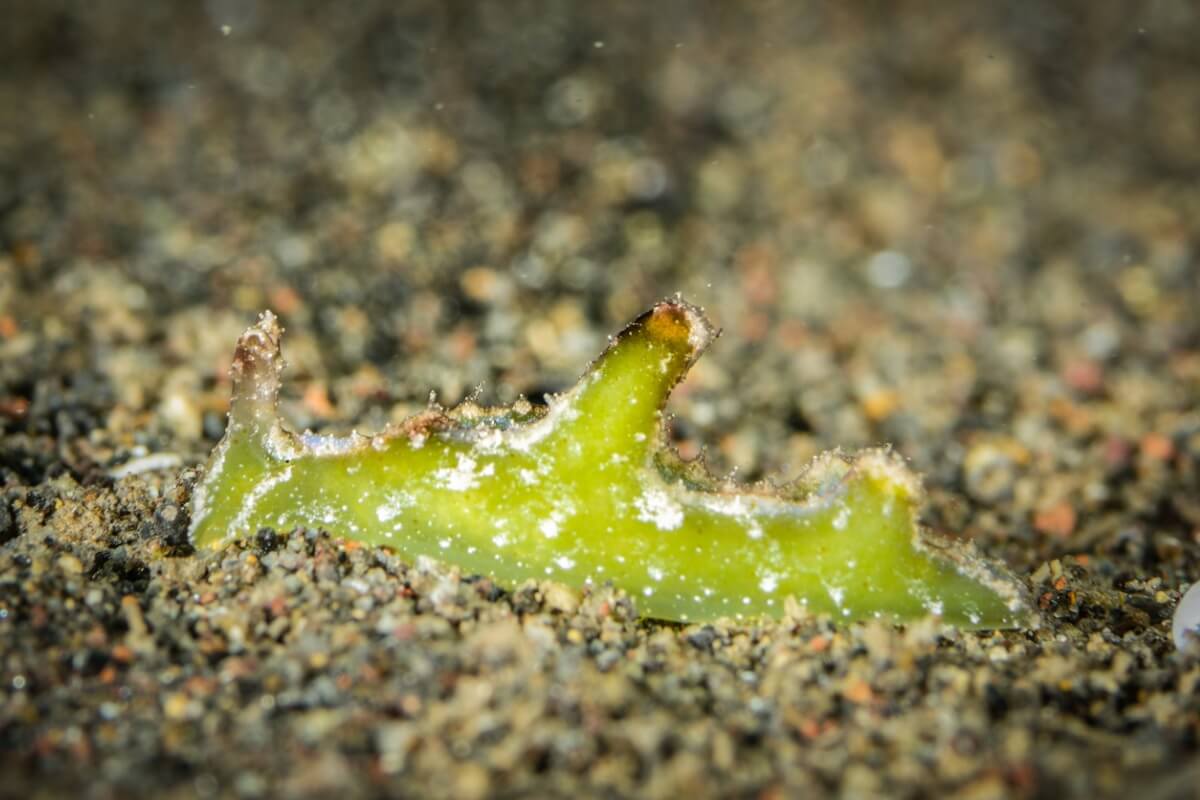The Emerald Slug: An Animal that Photosynthesizes

The metabolic process of photosynthesis consists of taking light energy from the sun through chloroplasts and converting it into chemical energy. This energy is transmitted to animals through the food chain and is essential for the production of oxygen. However, the emerald slug is an animal that can perform this process.
Historically, it has been shown that photosynthesis is an exclusive process of plants, some algae and certain microorganisms. However, nature always presents some exceptions and that is the case of the emerald slug: an animal that photosynthesizes and benefits from its food to survive in the sea, albeit for a short time.
Characteristics of the emerald slug
The emerald slug (Elysia chlorotica) is a gastropod mollusk discovered in 1870 that inhabits the waters of the North Atlantic, especially in the oceans that go from the state of Florida to the island of Nova Scotia. It can be found in saline and brackish environments, at the mouths of some rivers in this area of the world.
The emerald slug can grow up to 45 millimeters in length, however its common size is between 20 and 30 millimeters.
Physically, it is characterized by an intense emerald green color that it receives from the absorption of chlorophyll. Its body sometimes has small white or red spots. Its texture is thin, but it widens on the sides, offering it an appearance similar to a lettuce leaf, if the particular head that slugs have is omitted.

When this animal senses danger, it folds its body to defend itself from its predators. In the same way, it tends to protect itself from these thanks to the magnificent camouflage provided by its peculiar shape, with which it goes unnoticed within the seaweed, on which it feeds.
The emerald slug in its youth has a brown or gray color with some red spots, because it hasn’t absorbed the chloroplasts necessary to adopt the characteristic green color. For this reason, juveniles don’t usually attract attention.
Despite being such a unique animal in the marine ecosystem, its life expectancy is no more than 11 or 12 months. Adults experience massive death after laying their eggs, and this behavior is the cause of an inherited disease.
Regarding its reproduction, not much information is known. However, other species of the clade Sacoglossa are hermaphrodites.
How does it photosynthesize?
First of all, it must be explained that this mollusk feeds on algae, especially the Vaucheria litorea species. The slug eats these algae with small “bites” through its radula or tongue. Since they are born, these animals begin to consume many of these algae and need them to acquire their particular bright green color.
This is because, by feeding on these plants, they can steal chloroplasts from them and store them in the cells of your body. Slugs have also been observed to receive sugars from this interspecific relationship. Due to this, the species is not born with the ability to carry out photosynthesis, but acquires it over time, thanks to its food.
In its adult stage, this invertebrate can live without consuming algae and feed on the energy of the sun.
In addition, these mollusks have special molecules that allow them to store the chlorophyll of the chloroplasts, instead of digesting it. Evolution has allowed the species not to quickly reject the elements it consumes from the algae it eats. Thus, a case is evidenced where the animal and plant kingdoms come together to present a single individual.
Finally, it should be noted that there is a horizontal gene transfer between the slug and the algae. This flux is commonly generated between bacteria or to a much lesser extent between plants and very few animal species. This relationship has made the mollusk adhere to a part of the algae’s genetic information and admit the chloroplasts as its own.

Just as you’ve seen, the emerald slug is an animal that can easily go unnoticed in the water thanks to its fantastic camouflage. Its evolution has allowed it to take advantage of the chloroplasts of the algae and live practically the rest of its short life only with the energy of the sun, a characteristic that is not inherited and each one must fight to learn.
All cited sources were thoroughly reviewed by our team to ensure their quality, reliability, currency, and validity. The bibliography of this article was considered reliable and of academic or scientific accuracy.
- Rumpho, M. E., Worful, J. M., Lee, J., Kannan, K., Tyler, M. S., Bhattacharya, D., … & Manhart, J. R. (2008). Horizontal gene transfer of the algal nuclear gene psbO to the photosynthetic sea slug Elysia chlorotica. Proceedings of the National Academy of Sciences, 105(46), 17867-17871.
- Bhattacharya, D., Pelletreau, K. N., Price, D. C., Sarver, K. E., & Rumpho, M. E. (2013). Genome analysis of Elysia chlorotica egg DNA provides no evidence for horizontal gene transfer into the germ line of this kleptoplastic mollusc. Molecular biology and evolution, 30(8), 1843-1852.
- Pelletreau, K. N., Weber, A. P., Weber, K. L., & Rumpho, M. E. (2014). Lipid accumulation during the establishment of kleptoplasty in Elysia chlorotica. PLoS One, 9(5), e97477.
